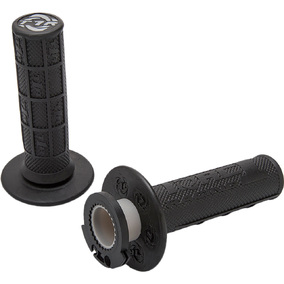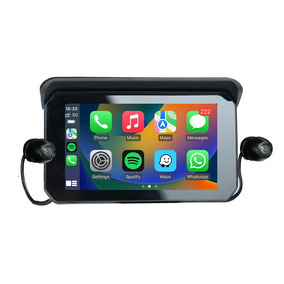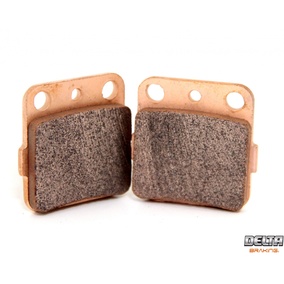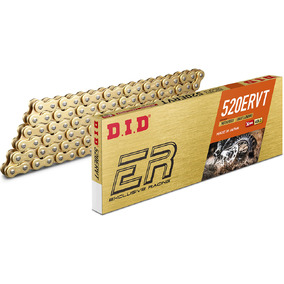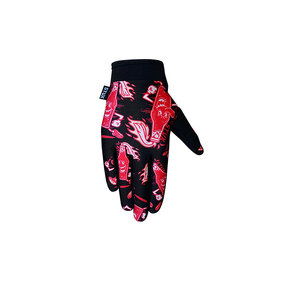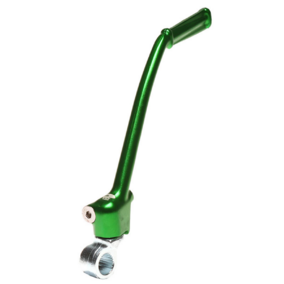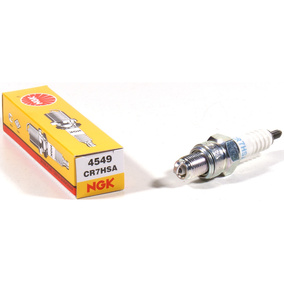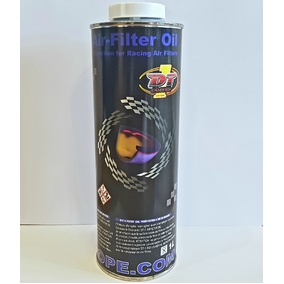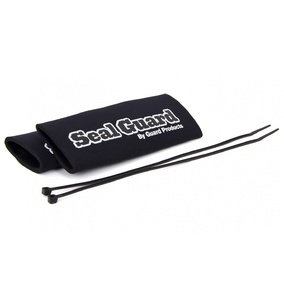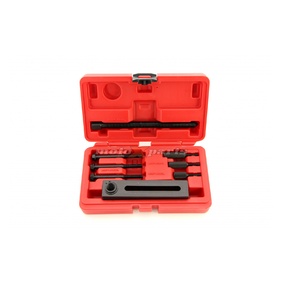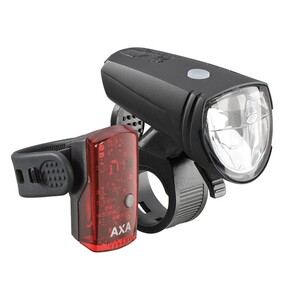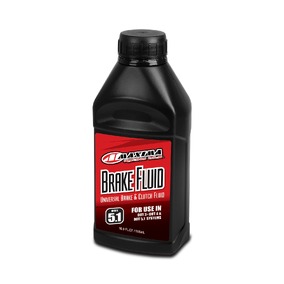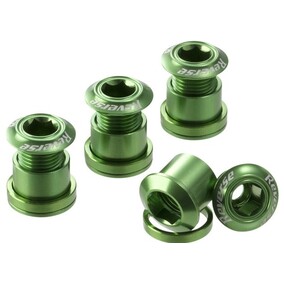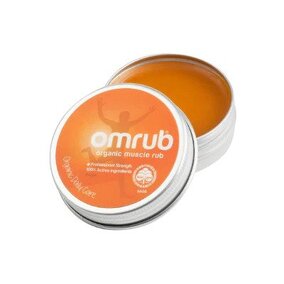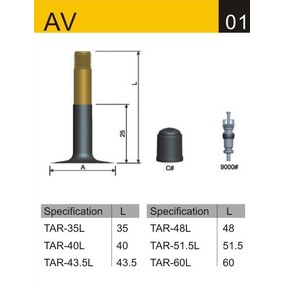Stainless Steel Oil Filters
1) Has this technology been proven yet?
This technology has been in use for many years and has proven itself in NASCAR, Formula One and the Aerospace industry. These filters have been in use in the off-road motorcycle world since 1995. Manufacturers like Yamaha have supplied their own version of it. The KTM factory guys have even been buying them for their own bikes (even though they can't legally endorse the product). Stainless steel filters are being used in road going vehicles and heavy diesel engines GM, Ford, Cummins, Mack, Freight-liner, Caterpillar, Peter Built, Detroit, Volvo, Mercedes and other diesel engines and industrial applications to extend engine life and cut maintenance cost. In other words, this is not a new idea, just proven technology. And of course, we run these filters on our personal bikes, street and dirt.
2) What kind of materials are used in these filters?
The filter housing and filter element end caps are carved out of a solid chunk of 6061T6 billet aluminium, which not only looks trick but aids in dissipating heat. The filter element is made from medical grade, type 304 stainless steel micronic filtering medical cloth to provide unmatched protection against oil contamination and resultant engine damage. The adhesive used in the filter assembly process is good to 600 degrees Fahrenheit, far above the normal operating temperature of 180 to 230 degrees. The quad-ring gasket doubles the seal between the filter housing and the engine.
3)Why is stainless steel not fitted to new OE bikes any-more?
The same reason why most new bikes do not have aftermarket exhaust, forged pistons etc...even good grips. It mainly comes down to cost, paper filers cost around 8-12 cents to manufacture.
All new bikes are built to a cost budget, that is why there are aftermarket parts that are higher quality. The first Yamaha 4-strokes had reusable filters, this model 4-stroke had more engine development put into it than any other 4-stroke to date, being the first 4-stroke supercross racing bike. Bike manufacturers realised they would not sell many oil filters if they were fitted with stainless steel, with the amount of paper filters used you know how many paper oil filters worldwide are sold. The term for making items not last is planned obsolescence. (We know customers with early Yamaha 4-strokes, that are still using the original genuine Yamaha reusable oil filter)
4) How does this type of filtration compare to paper filters?
We sent several common brands of paper filter material off to have them tested for the size of particles they would catch. We sent the material off with no names, just numbers for identification so the lab wouldn't have any idea what brand filter they were testing. The results we got back showed that the smallest particle the various material samples caught ranged between 9 and 20 microns. The LARGEST particle that was allowed to pass through ranged from 56 for the best filter to over 300 microns for the worst filter. Paper filters are rated on averages, percentages and multiple passes, so a 10 micron rated paper filter may be letting particles 50 microns and larger through. The medical grade stainless steel cloth that we use is consistent across the entire surface and is rated at 35 microns, meaning nothing larger than 35 microns should pass through the material. This type of filter material is also used in medical applications like blood filtration. Bottom line is paper is rated differently than the stainless cloth and either one works to filter your oil. Personally, I like the idea of keeping the big stuff out of the engine. (Stainless steel oil filter testing showed a 90% Improvement in Particle Removal over alot of paper "throw away" filters).
5) What Are Microns?
A micron is one thousandth of a millimetre. That's approx. .00003937 inches.
35 microns is about .00138", (just over one-thousandth of an inch). The lower limit of visibility to the human eye is about 40 microns. Pollens range from about 30 to 50 microns A white blood cell is about 25 microns
6) How much oil will this filter flow?
A very important dimension of oil filters to keep in mind is the flow rate. A one-inch square of our filter material flows 1.9 gallons of oil per minute at only 1-PSI pump pressure (70 degrees F). This means the screen we use in our S1 filter can flow 57 gals/minute!
7) How does the flow rate compare to paper filters?
We have run static pressure tests between our filters and paper filters for an identical application. The stainless steel micronic filter consistently flowed over 7 times more oil for the same time period than did the paper filter (tests were run at 68-degree ambient temperature). Think about your bike during cold start-up... nice thick cold oil, trying to get through that oil filter. We have read tests that reported multiple instances of oil going through the bypass valve during cold start-up because of the resistance of the paper oil filter to passing the cold oil. Now think about all the crud that has had a chance to settle to the bottom of the oil pan right where the oil pickup is.... just waiting to go through the bypass valve directly to the engine components!
Another thing that could affect the paper filter is moisture. Not everyone is aware that engines get condensation in them. When paper gets wet it swells and may pass even less oil.
8)I have a high-pressure oil pump. How much pressure will the aluminium filter take?
An S1 filter was pressure tested to 1500 psi with only slight deforming of the spiral lock and housing.
9) Is this filter environmentally friendly?
GREEN AND PERFORMANCE!!! WASHABLE AND REUSABLE. NO TOXIC DISPOSAL.
With the cleanable, reusable design you no longer will be sending oily paper filters to the landfills (some states don't even allow oil filters to go to the landfills... they must be going through special, expensive disposal processes). What does come out of the reusable filter can be sent to the recycling centre with the rest of your old oil.
10)How long will a stainless steel oil filter last?
Stainless steel oil filters will last the life of the engine, meaning you will never need to buy another oil filter.
11) How much oil does this filter hold?
Slightly more or less than the stock filter depending on the specific application. It doesn't really make any difference. Continue to use your manufacturers prescribed method of checking to make sure there is the proper amount of oil in the engine (usually via a dipstick).
12) How often should I clean the filter?
We recommend the filter be cleaned frequently or when a oil change or engine work is performed, also when first purchased before using. Frequent cleaning will give you a feel for how much debris is being filtered out of your machines oil and help you decide how often you want to clean the filter for your application. At minimum, clean the filter with every oil change due the additional debris this superior filter will be keeping out of your motor. Remember, oil is the lifeblood of your motor, keep it clean!
13) How do it clean it?
Simply remove the filter, rinse in clean solvent and replace it, you're done. The filter can be cleaned with solvent, kerosene, aerosol carburettor cleaner, or any other degreasing agent, even common dish soap. You can even blow air through the filter from the inside out to remove any small particles or cleaning agent from the screen if you so desire.
14) Will this filter affect my warranty?
Number Under the Magnuson-Moss Warranty Act, 15 U.S.C. SS 2301-2312 (1982), and the general principles of the Federal Trade Commission Act, a manufacturer may not require the use of any brand of filter unless the manufacturer provides that item free of charge under terms of the warranty. So, if you are told by a dealer that anything other than a specific brand of filter will void your warranty, ask for the statement in writing (you won't get one), and request that filter be supplied free of charge. If you are charged for the filter, the dealer will be violating the Magnuson-Moss Warranty Act and other applicable law. This is a federal law and the Federal Trade Commission has authority to enforce it, including obtaining injunctions and orders containing affirmative relief. For more info do an Internet search on "Magnuson-Moss Warranty Act".


